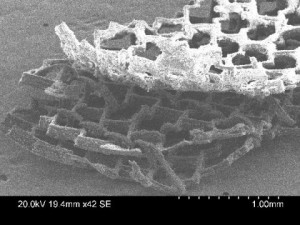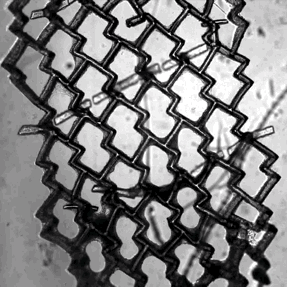Velcro-like Scaffold to Paste Heart Cells


Photomicrograph of 3 sheets of the scaffold. The middle layer shows the hook & loop mechanism. From: Radisic Lab, U. of Toronto.
Engineers from the University of Toronto have assembled functional heart tissue with a biocompatible scaffold that allows layers of cells to attach like Velcro. The findings were published in the journal Science Advances.
Heart muscle cells have long been grown in vitro, but these cells lack structural cells found in vivo. As a consequence, lab-grown cells are weaker and not well shaped. Radisic’s team has been trying to design an environment close to the real one, and they finally managed to recreate in vivo conditions and to obtain fully functional cells.
Using the polymer POMaC, Dr. Zhang’s and his colleagues created a 2D net of non-simmetrical holes, and this feature causes the heart muscle cells to align together. An electrical current is applied to make the cells contract together, bending the flexible polymer. On top of it, the researchers placed another polymer sheet, this one with T-shaped structures that become entangled in the holes below, creating a Velcro-like structure. When the sheets clicked and were electrified, the cells started beating as one.
The main advantage of the new technique is the ease of use. Custom size tissue structures can be built right before needed, and then disassembled. In the near future, modules of the 3D mesh will be used like building blocks to create a graft for a patient. As the polymer is biodegradable, it would be eventually absorbed by the organism.
Source: U. of T.

Sped up GIF of the mesh compressed by the contraction of synchronic heart cells that grow on the scaffold (From: Boyang Zhang, U. of Toronto).

